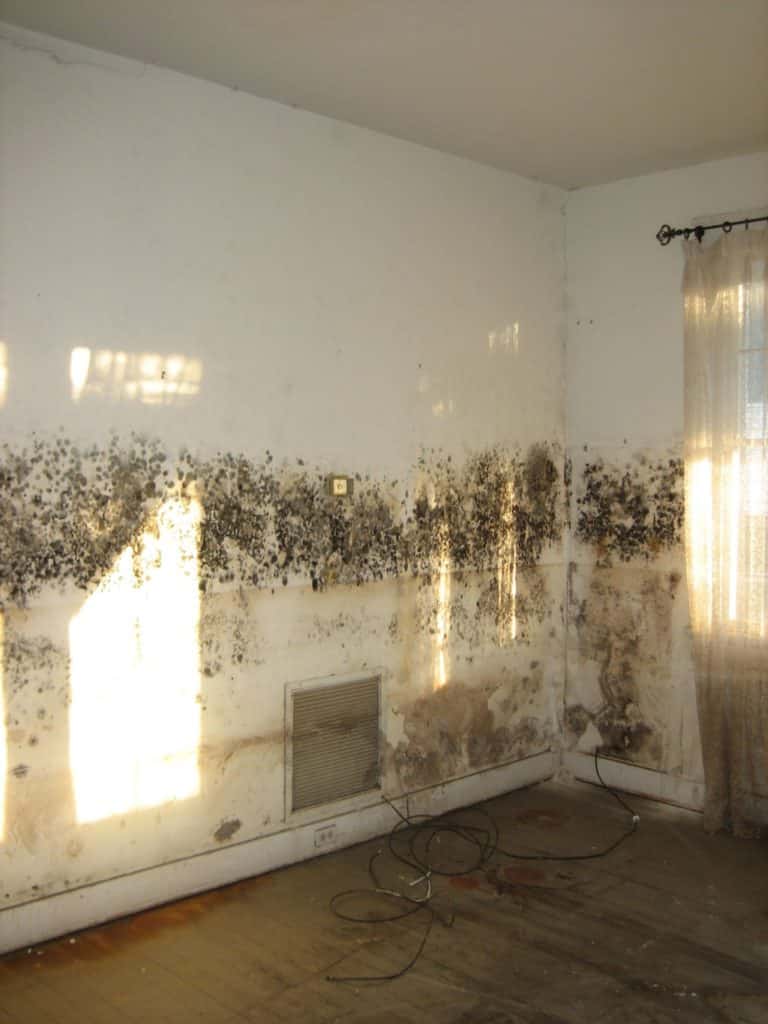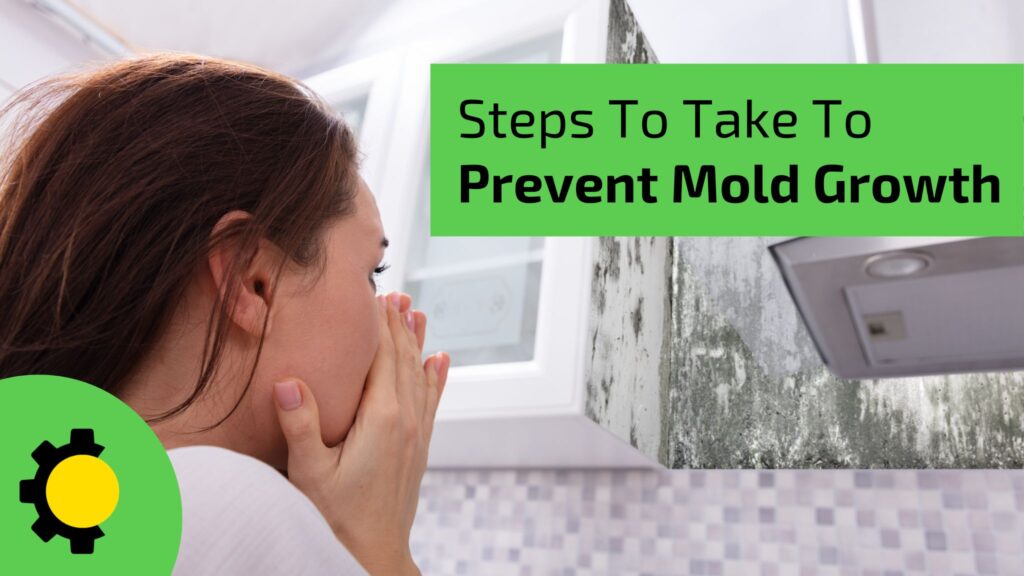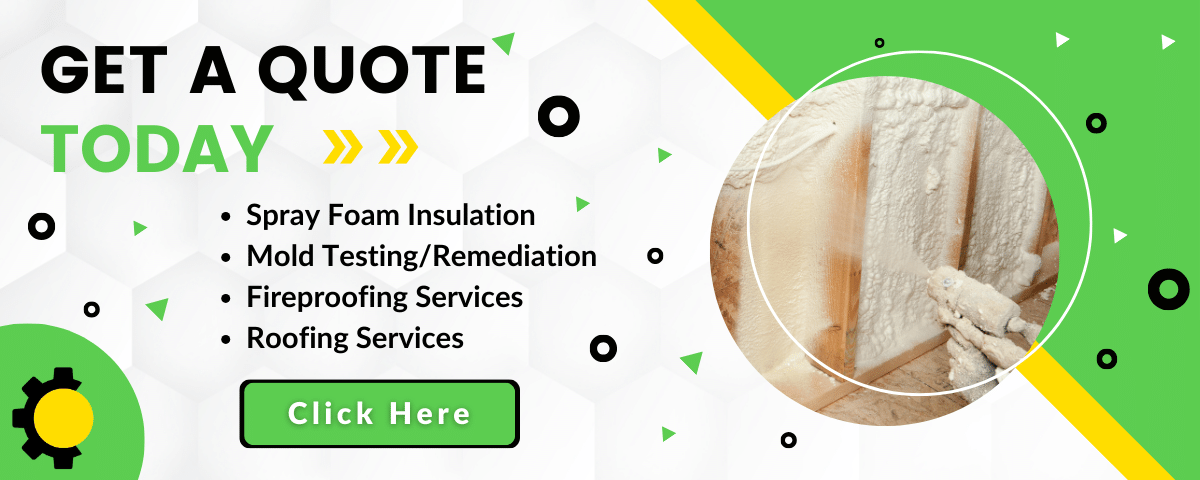Does the very idea of mold creeping into your home/business make you sick? While the thought alone probably can’t do it, the mold itself actually can. Besides being smelly, unsightly and damaging to your property, mold exposes you to potentially serious health hazards.
The longer the mold is around, the greater the risks, especially from breathing the spores. According to the LSU Ag Center, “all indoor mold growth is potentially harmful and should be removed promptly, no matter what type of mold is present.” So if you suspect that you have a mold problem, the time to act is NOW!
Steps to mold prevention
The good news is that there is something you can do to prevent the growth of mold in your home. In fact, there are 10 things you can do to prevent mold growth. And while nothing can guarantee that you will never have to deal with a mold issue (especially here in Louisiana), These ten steps will help significantly reduce your chances.
1. Control Indoor Humidity
Mold spores require moisture to grow, so one of the most effective ways to prevent mold is by controlling indoor humidity. Ensure that your home is well-ventilated, use exhaust fans in bathrooms and kitchens, and consider using a dehumidifier if necessary. Keeping indoor humidity levels below 50% can significantly inhibit mold growth.
2. Fix Leaks and Water Intrusion
Inspect your home regularly for leaks and water intrusion. Even minor leaks from pipes, roofs, or windows can create a conducive environment for mold. Promptly repair any leaks and address water-related issues to prevent moisture buildup.
3. Improve Ventilation
Proper ventilation helps reduce moisture levels in your home. Ensure that your attic, crawl spaces, and basements have adequate ventilation. Regularly clean and maintain ventilation systems, including air ducts, to prevent mold from spreading through your home.
4. Use Mold-Resistant Products
When renovating or building your home, consider using mold-resistant building materials and paints. Mold-resistant drywall, for example, contains additives that inhibit mold growth, making it an excellent choice for high-humidity areas.
5. Keep Your Home Clean
Regular cleaning can help prevent mold growth. If you’re trying to prevent having to get mold removed or remediated, pay special attention to areas that are prone to moisture, such as bathrooms and kitchens. Scrub surfaces, remove any visible mold, and use mold-preventing cleaning agents. Don’t forget to clean and dry bath mats and shower curtains regularly.
6. Monitor Indoor Plants
Indoor plants can contribute to mold growth if their soil remains consistently damp. Be mindful of the moisture level in your potted plants and ensure proper drainage to prevent mold from thriving in the soil.
7. Maintain Your Gutters
Clogged or damaged gutters can lead to water accumulation near your home’s foundation, providing an ideal environment for mold growth. Clean and maintain your gutters regularly to divert rainwater away from your home.
8. Store Items Properly
Basements and attics are common storage areas, but they are also susceptible to mold growth. Store items off the floor, use plastic containers instead of cardboard boxes, and periodically inspect stored items for signs of mold or moisture.
9. Use Exhaust Fans
Whenever you cook or shower, use exhaust fans to remove excess moisture from your home. Make sure these fans vent to the outdoors rather than into an attic or crawl space.
10. Monitor and Act Promptly
Regularly inspect your home for signs of mold, such as musty odors, discolored walls, or water stains. If you spot any issues, address them promptly to prevent mold from spreading further.
But how do I know if mold is already lurking in my home?
Simply put, if it stinks like mold and looks like mold, it probably is. But knowing for sure whether you have a mold problem really isn’t quite that simple. Here are some signs to look for:
- That aforementioned moldy smell. In many cases, this will be the ONLY sign that mold has moved in with you, so don’t ignore it just because you don’t SEE signs of mold.
- Clusters of small black/gray/brown/green/white spots on walls, ceiling, windows, floors, baseboards, orange/pink/purple spots on wallpaper; or white thread-like patterns in any of those areas. Remember that even the smallest mold patch can lead to a bigger one, or, worse, there could already be a larger mold colony hiding in the background!
- A past or ongoing moisture problem like flooding, leaks, or high humidity/condensation levels. Mold loves moisture, so even if you don’t smell or see mold, any building with moisture problems is at particularly high mold risk.
- Sneezing, runny/stuffy nose, cough, itchy/watery eyes that suddenly get better whenever you leave the house/building.
I think I have a mold problem. What should I do?
The EPA says that if the moldy area is less than about 10 square feet, you can try tackling it yourself — as long as you don’t mind donning an N-95 respirator, mid-forearm gloves and unvented goggles. Plan on doing lots of scrubbing, and make sure that you thoroughly research what types of cleansers, chemicals and/or biocides are appropriate for your situation.
But what if I suspect there’s lots more where that came from?
If your mold problem appears any bigger, or if you think you may have a hidden mold problem, the EPA recommends that you hire a mold remediation professional. They also caution that even dead mold can cause allergic reactions. Remember that the mold has to be not only killed, but removed!
How can Sunlight Contractors help?
Our mold remediation experts will not only address your existing mold problems, they can help you prevent future mold problems with solutions like mold-proof, fireproof, soundproof spray-on insulation. If you think you may have a mold problem, call Sunlight Contractors. Our professionals know just what to do to help protect your home or business — and your health!
In conclusion
Taking preventive measures to control moisture and maintain proper ventilation is key to preventing mold growth in your home. By following these steps, you can create a healthier and mold-free living environment for you and your family. Regular maintenance and vigilance are your best allies in the ongoing battle against mold.


